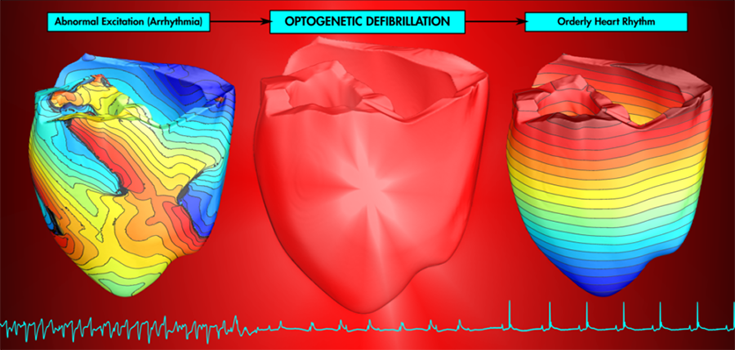Light Beams May Replace Electricity in Heart Beat Disorders
Light Beams May Replace Electricity in Heart Beat Disorders
A team of scientists at the University of Johns Hopkins and Germany’s University of Bonn have found that beams of light can help replace electric shocks for patients who suffer from potentially fatal heart rhythm disorders.
Currently, those who suffer from heart rhythm disorders wear devices that deliver electric shocks to the heart to coax it to begin beating normally again. These devices can also help restart a heart if it begins to fail, saving the patient from certain and sudden death. This can be incredibly painful for patients, and can even damage heart tissue.
If scientists can succeed in using light beams, helping a person’s heart get back to its normal rhythm will be totally painless and won’t do any further damage to the already ailing heart.
The researchers have been using optogenetics, which embeds light sensitive proteins into tissue. For this research, the scientists at the University of Bonn used the technology on genetically altered mice whose hearts had been engineered to express proteins that react to light. It was found that a one second pulse of light could actually restart a mouse’s heart and restore the rhythm to normalcy.
Tobias Bruegmann, one of the lead researchers and authors of the study at the University of Bonn, stated:
“This is a very important result. It shows for the first time experimentally that light can be used for defibrillation of cardiac arrhythmia.”
Read: New Blood Test Can Predict a Heart Attack Within 5 Years
While testing on animals gives scientists a very vague idea if the experiments performed can work on humans, it doesn’t always give a full picture. In order to verify that it could work on a human, a team at Johns Hopkins University worked to create a computer model of a human heart to test whether the light therapy would work on a human being. The computer model was created based on the MRI scans of a patient who had recently experienced a heart attack and was at risk for developing an arrhythmia. [2]
The team at Johns Hopkins found that the light pulses could help the human heart model , with red lights being more effective in humans and blue lights being more effective in mice. Blue lights have a much smaller wavelength, and are unable to penetrate the human heart.
The researchers indicated that it would take 5 to 10 years before it would be available to the public and it is still in the basic research phase.
| About Anna Scanlon: | |
| Anna Scanlon is an author of YA and historical fiction and a PhD student at the University of Leicester where she is finishing her degree in modern history. You can find out more about Anna and her books on her lifestyle blog annainwonderland.co.uk. | |
Other Popular Stories:
There are no related stories quite yet.

Post a Comment